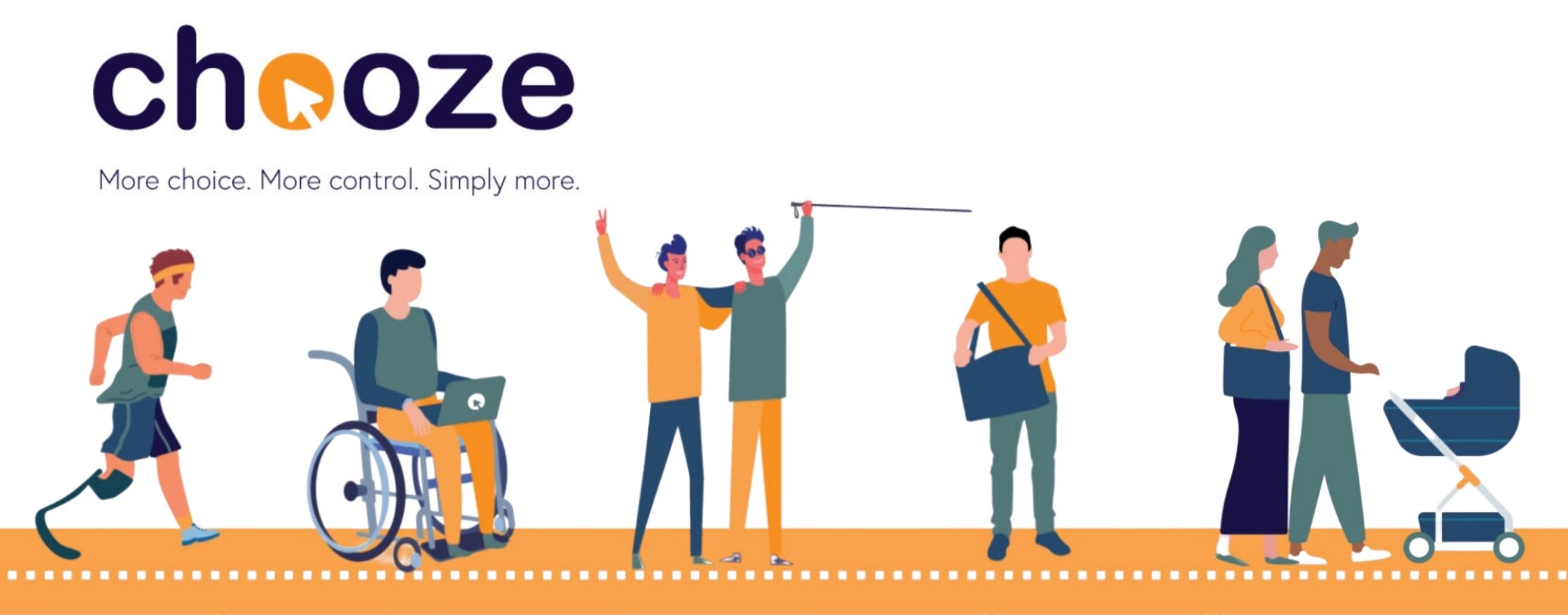Making Assistive Technology work for you: five things about AT that you may not have already considered.
Image Description: a blonde male student with an adaptive powered wheelchair is working on a laptop.
Assistive Technology (AT) can be life transforming for many people on the NDIS, but there are often areas to consider that some might overlook.
Here we talk about five things to think about with AT that might not be on your radar.
1. Training and becoming familiar with new AT
While AT can deliver so much benefit, there is often a steep learning curve. For more simple AT integrations, this may not be a the case but even things like changing the way you do simple tasks while using a new item of AT may take some adjustment. For more complex technology we can sometimes underestimate the time it takes to understand and become familiar with it. Things like frustration can take the place of excitement if training, time and patience aren’t real parts of initially integrating AT into your daily life.
Making sure you’ve had enough training from AT experts to be comfortable operating/using the AT on your own or in a real-life situation is the key to success. This could involve tutorials, practice sessions, one on one appointments with AT experts or any of your other supports and ongoing support or mentorship from professionals.
2. Accessibility across all your environments
Some Assistive Technology may work seamlessly in one environment, such as in your own home, but take it outside or in other spaces, it may not be up to the task. This may be ok in your particular situation, but it’s definitely worth considering how your specific AT adapts to changing environments, such as home, work, school or public spaces. Some AT solutions might require adjustments or specific settings to work optimally in different situations. This also includes ensuring compatibility with different devices you may use in different spaces, networks or internet access and physical set ups and their requirements.
3. Social and emotional impact
Making Assistive Technology part of your everyday life can have social and personal impact in new ways that we won’t fully understand until we live them. People might experience mixed feelings about using technology to help them carry out their daily activities, potentially leading to self-esteem or identity-related issues. Open communication with family, friends and colleagues about the AT’s purpose and benefits can help reduce any social discomfort or misunderstandings. Exploring online communities and support groups can also provide a platform to connect with others who are having similar experiences.
4. Maintenance and upgrades
Assistive Technology, like any technology, can require maintenance and occasional upgrades (hopefully not as many as an iPhone). It may not be something you first consider when bringing in new AT, but software updates, hardware maintenance and troubleshooting will require time and space to allow them to take place to ensure the long-term success of the technology. This might mean downtime, scheduled or otherwise, which may cause disruption in your daily life. Understanding how to keep your technology in its best working order and knowing where to go for technical support can help prevent ongoing or unexpected disruptions.
5. Privacy and security
Many modern Assistive Technologies are interconnected and may gather or transmit personal data. It’s crucial to consider the privacy and security aspects of these technologies. Research the data collection practices of the devices or apps you’re using and make informed decisions about sharing sensitive information. Take steps to secure your devices, use strong passwords, enable encryption when possible and stay aware of potential security risks.
There are so many benefits to integrating Assistive Technology into your daily life, just remember that it’s a process that needs ongoing evaluation and adjustment. Make sure you regularly assess how the technology is meeting your needs and whether modifications are necessary. Keep in the loop about the latest in AT developments by sharing your experiences on Kinora.
The Chooze Shop believe that everyone, regardless of their disability, should have easier access to the tools and resources they need to live their lives to the fullest.



